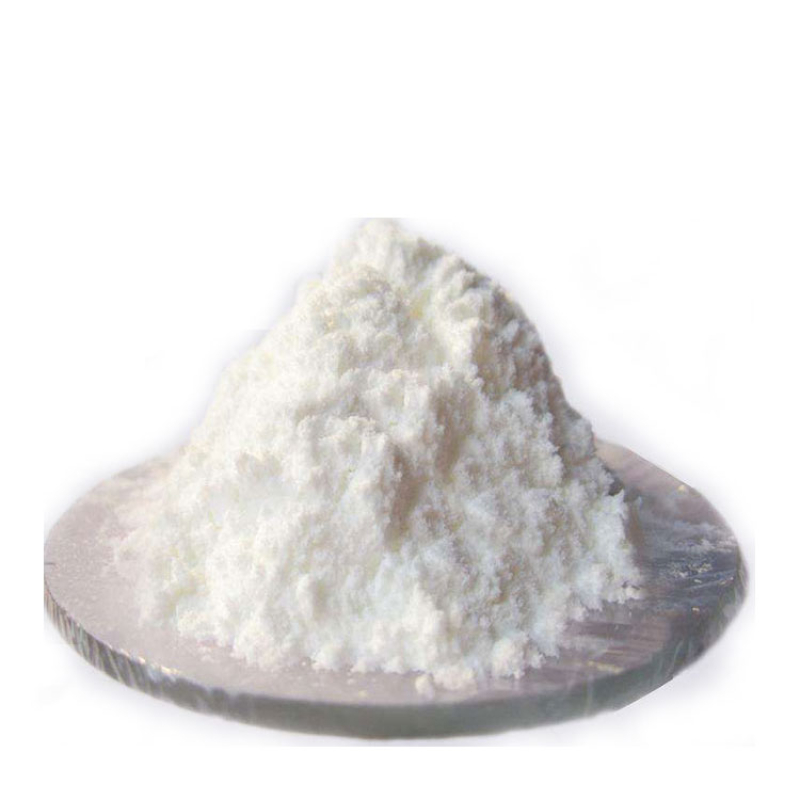Products Description of 5-Bromothiophenesulfonyl Chloride CAS#55854-46-15-Bromothiophene-2-sulfonyl chloride is an organic compound.5-Bromothiophenesulfonyl Chloride Chemical PropertiesMelting point 40-44 °C (lit.)Boiling point 100-102 °C/0.5 mmHg (lit.)density 1.985±0.06 g/cm3(Predicted)Fp >230 °Fstorage temp. Keep in dark place,Inert atmosphere,Store in freezer, under -20°Cform crystalline powdercolor Off-white/ faint lemonSensitive Moisture SensitiveCAS DataBase Reference55854-46-1(CAS DataBase Reference)Safety InformationHazard Cod
Contact Now
Products Description of CERIUM(III) CHLORIDE CAS#7790-86-5White crystalline particles Cerium trichloride is a colorless, deliquescent block crystal or powder. When exposed to humid air, it quickly absorbs water to form hydrates of uncertain composition.
Contact Now
Products Description of Benzalkonium chloride CAS#8001-54-5Benzalkonium chloride (BAC for short) is a quaternary ammonium salt compound. As a broad-spectrum fungicide of cationic surfactants, it can effectively control the growth of algae and slime in water, and has good slime stripping effect and certain dispersion and penetration effects. It also has certain degreasing, deodorizing and corrosion inhibition effects.
Contact Now
Products Description of Chromic chloride hexahydrate CAS#10060-12-5Purple monoclinic crystal. Relative density 1.76. Melting point 83℃. Soluble in water, ethanol, slightly soluble in acetone, insoluble in ether. Deliquescent. Toxic!Chromic chloride hexahydrate Chemical PropertiesMelting point 83 °Cdensity 1.76 g/mL at 25 °C(lit.)storage temp. Inert atmosphere,Room Temperaturesolubility Methanol (Slightly), Water (Slightly)form Powder/SolidSpecific Gravity1.76color Reddish-violetPH2.0-3.0Water Solubility Soluble in water and alcohol.
Contact Now
Products Description of Dodecyltrimethylammonium Chloride CAS#112-00-5Dodecyltrimethylammonium Chloride is a cationic surfactant that can be used to form nanocapsules.
Contact Now
Products Description of CERIUM(III) CHLORIDE ANHYDROUS CAS#779008-60-5Colorless block crystals. Relative density 3.92. Melting point 848℃. Boiling point 1727℃. Soluble in water, acetone and acid. Easy to deliquesce.Product Application of CERIUM(III) CHLORIDE ANHYDROUS CAS#779008-60-5It is used as petroleum catalyst, raw material of cerium salt, and also used to make metallic cerium.Factory and Equipment ShowFast delivery timeInventory 2-3 working days New production 7-10 working days
Contact Now
Products Description of Didecyl dimethyl ammonium chloride CAS#7173-51-5Didecyl dimethyl ammonium chloride belongs to the double-chain quaternary ammonium salt compounds, which are used in many products due to their bactericidal, virucidal and fungicidal properties. In terms of disinfection function classification, didecyl dimethyl ammonium chloride belongs to the medium-level disinfectant and is a broad-spectrum virus disinfectant.
Contact Now
Products Description of Didecyl dimethyl ammonium chloride CAS#7173-51-5Didecyl dimethyl ammonium chloride belongs to the double-chain quaternary ammonium salt compounds, which are used in many products due to their bactericidal, virucidal and fungicidal properties. In terms of disinfection function classification, didecyl dimethyl ammonium chloride belongs to the medium-level disinfectant and is a broad-spectrum virus disinfectant.
Contact Now
Products Description of TRANS-1,2-DICHLOROETHYLENE CAS#156-60-5Trans-1,2-dichloroethylene is a chemical substance, a colorless, volatile liquid with a slightly pungent odor, flammable, and its vapor can form an explosive mixture with air. It can cause combustion and explosion when exposed to open flames and high heat. It can decompose into highly toxic phosgene and hydrogen chloride gas when heated in the air. It can react strongly with oxidants.
Contact Now
Products Description of Benzalkonium Chloride CAS#63449-41-2Benzalkonium chloride is a cationic surfactant and a non-oxidizing fungicide. It has a broad spectrum and high efficiency in killing bacteria and algae. It can effectively control the reproduction of bacteria and algae and the growth of slime in water. It has good slime stripping effect and certain dispersion and penetration effects. It also has certain degreasing, deodorizing and corrosion inhibition effects.
Contact Now
Products Description of Benzalkonium chloride CAS#63449-41-2Benzalkonium chloride is a cationic surfactant and a non-oxidizing fungicide. It has a broad spectrum and high efficiency in killing bacteria and algae. It can effectively control the reproduction of bacteria and algae and the growth of slime in water. It has good slime stripping effect and certain dispersion and penetration effects. It also has certain degreasing, deodorizing and corrosion inhibition effects.
Contact Now
Products Description of Dodecyltrimethylammonium chloride CAS#112-00-5This product has two specifications. When the effective content is 32% to 35%, the appearance is light yellow liquid. Solidification point -15℃. Relative density 0.981g/cm3. HLB value 17.1. Flash point (open cup) 60℃. When the effective content is 49% to 52%, the appearance is thick liquid. Solidification point -12~-9℃. Density 0.892g/cm3. HLB value 17.1. Flash point (open cup) <27℃. Surface tension (10% aqueous solution) 33×10-3N/cm. Both are miscible with water. Stable chemical properties.
Contact Now
Products Description of Dodecyltrimethylammonium chloride CAS#112-00-5This product has two specifications. When the effective content is 32% to 35%, the appearance is light yellow liquid. Solidification point -15℃. Relative density 0.981g/cm3. HLB value 17.1. Flash point (open cup) 60℃. When the effective content is 49% to 52%, the appearance is thick liquid. Solidification point -12~-9℃. Density 0.892g/cm3. HLB value 17.1. Flash point (open cup) <27℃. Surface tension (10% aqueous solution) 33×10-3N/cm. Both are miscible with water. Stable chemical properties.
Contact Now
Products Description of Benzalkonium Chloride CAS#63449-41-2Benzalkonium chloride is a cationic surfactant and a non-oxidizing fungicide. It has a broad-spectrum and highly effective bactericidal and algaecidal ability. It can effectively control the growth of algae and slime in water, and has good slime stripping effect and certain dispersion and penetration effects. It also has certain degreasing, deodorizing and corrosion inhibition effects. Benzalkonium chloride has low toxicity, no cumulative toxicity, is easily soluble in water, and is not affected by water hardness.
Contact Now
Products Description of Benzyltributylammonium chloride CAS#23616-79-7Benzyltributylammonium chloride is a chemical substance with the molecular formula C19H34ClNBenzyltributylammonium chloride Chemical PropertiesMelting point 155-163 °C (lit.)Boiling point 466.93°C (rough estimate)density 0.9523 (rough estimate)refractive index 1.6000 (estimate)storage temp. Sealed in dry,Room Temperatureform Crystalline Powdercolor White to ivoryWater Solubility solubleSensitive HygroscopicBRN 3776210Stability:Stable. Combustible.
Contact Now
Products Description of Choline chloride CAS#67-48-1Choline chloride was developed by the Agricultural Technology Institute of the Ministry of Agriculture, Forestry and Fisheries of Japan in 1964, and registered as a plant growth regulator in 1987. It also became vitamin B4. Common choline chlorides on the market are divided into plant-carrier choline chloride and white carbon black (silicon dioxide) as a carrier choline chloride. my country's production is about 400,000 tons, accounting for more than 50% of the global production capacity.
Contact Now
Products Description of Tetradecyldimethylbenzylammonium chloride CAS#139-08-2Benzyldimethyltetramethylammonium chloride is a quaternary ammonium salt used for eye care or treatment of eye diseases. It is an ion association reagent for extraction photometric analysis and a sensitizer for metal photometric determination. It can be dissolved in water and ethanol in any proportion, and can be used with cationic, nonionic surfactants or dyes at the same time. It should not be used with anionic surfactants or additives.
Contact Now
Products Description of Tetradecyldimethylbenzylammonium chloride CAS#139-08-2Benzyldimethyltetramethylammonium chloride is a quaternary ammonium salt used for eye care or treatment of eye diseases. It is an ion association reagent for extraction photometric analysis and a sensitizer for metal photometric determination. It can be dissolved in water and ethanol in any proportion, and can be used with cationic, nonionic surfactants or dyes at the same time. It should not be used with anionic surfactants or additives.
Contact Now
Products Description of N-Hexadecyltrimethylammonium chloride CAS#112-02-7Cetrimonium chloride, also known as hexadecyltrimethylammonium chloride, is a white crystalline powder. It is easily soluble in isopropyl alcohol and water. It produces a lot of foam when shaken. It has good compatibility with cationic, nonionic and amphoteric surfactants.
Contact Now
Products Description of Benzethonium chloride CAS#121-54-0Benzethonium chloride is a new type of quaternary ammonium salt antibacterial agent, which is widely used in daily chemicals and cosmetics industries. In addition, it also has important applications in the medical and health fields as a bactericidal antibacterial agent. For example, it has been widely used as an antibacterial component of eye drops or as an antibacterial component of injection in Western countries.
Contact Now
Products Description of Vinylbenzyl chloride CAS#30030-25-2Chloromethylvinylbenzene can be used as an organic synthesis intermediate and a pharmaceutical intermediate, mainly used in laboratory research and development processes and chemical production processes.Vinylbenzyl chloride Chemical PropertiesMelting point -30°CBoiling point 229 °C(lit.)density 1.074 g/mL at 25 °C(lit.)vapor density 5.3 (vs air)vapor pressure 1 mm Hg ( 56.1 °C)refractive index n20/D 1.572(lit.)Fp 221 °Fstorage temp. -20°Csolubility Acetonitrile (Slightly
Contact Now
Products Description of Iridium(III) chloride hydrateCAS#14996-61-3Green crystals or brown powder, easily absorbs moisture, dissolves in water and hydrochloric acid, loses crystal water when exposed to strong heat.Iridium(III) chloride hydrate Chemical PropertiesMelting point 763°C (dec.)density 5.3 g/mL at 25 °C(lit.)storage temp. Inert atmosphere,Room Temperaturesolubility 623.82g/l solubleform Crystalscolor BlackPH<2 (H2O, 20℃)Aqueous solutionWater Solubility Soluble in water and alcohol.Merck 14,5088Stability:hygroscopicInChIIn
Contact Now
Products Description of Chloroacetyl Chloride CAS#79-04-9Colorless or slightly yellow liquid with strong irritation. Soluble in benzene, carbon tetrachloride, ether and chloroform. Toxic! Irritating to eyes and mucous membranes.Chloroacetyl chloride has active chemical properties and decomposes when exposed to water and alcohol. It can be used as an acylation reagent. For example, it can react with naphthalene, cyclopropane, ethylene and other reagents.
Contact Now
Products Description of Cyanuric chloride CAS#108-77-0Cyanuric chloride is an organic compound with the molecular formula C3Cl3N3. It is an important fine chemical product with a wide range of uses. It is an intermediate in the pesticide industry and a raw material for manufacturing reactive dyes. It can be used as various auxiliaries in organic industrial production. Agents, such as fluorescent whitening agents, textile anti-shrunk agents, surfactants, etc., are rubber accelerators and one of the raw materials used in the manufacture of explosives for national defense.
Contact Now

































